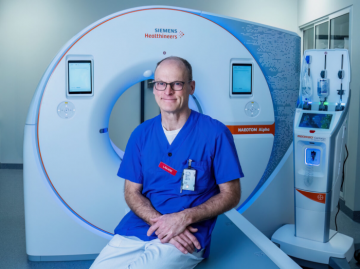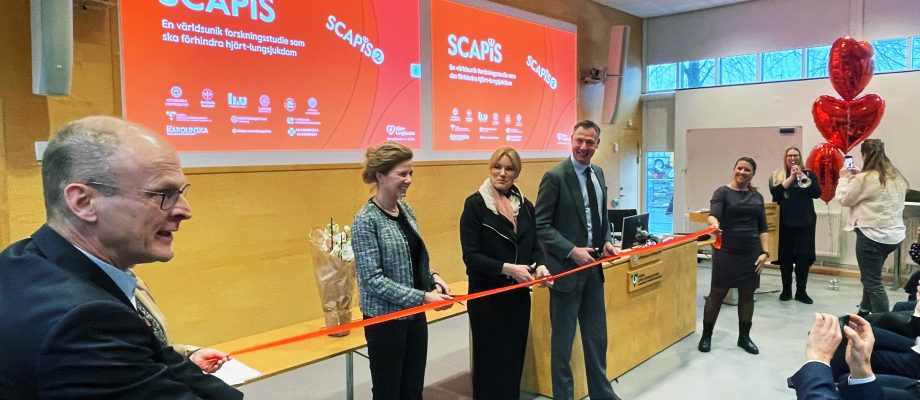CONTINUATION OF STUDY. Over 30,000 randomly selected participants aged between 50 and 64 nationwide were examined when the SCAPIS study for cardiovascular and lung diseases began approximately ten years ago. Sahlgrenska University Hospital is leading the way as the second part of the study commences, with over 3,000 individuals from western Sweden being called to undergo follow-up examinations.
“Now we know that a significant portion of Sweden’s population aged 50-64 is at risk of experiencing a heart attack, and research needs to develop effective methods for identifying individuals at risk. The previous study revealed that four out of ten Swedes aged 50-64 had visible plaques in the coronary arteries without a previously known cardiovascular disease. Additionally, one in twenty participants was found to have a previously undetected serious coronary artery disease,” says Göran Bergström, professor at the University of Gothenburg, senior physician at Sahlgrenska University Hospital, and principal investigator for SCAPIS.
Advanced imaging technology

SCAPIS (Swedish CArdioPulmonary bioImage Study) is a Swedish population study that, from 2013 to 2018, examined the heart and lung status of 30,000 randomly selected women and men aged between 50 and 64.
SCAPIS 2 is a follow-up study where half of the participants will be re-examined during the years 2024-2026. The overarching goal of SCAPIS is to predict who is at risk of developing cardiovascular or lung diseases and prevent these diseases before they occur. The study is a collaboration between six universities and university hospitals in Sweden and the Heart/Lung Fund, which is the main financier of the study.
The method employed by researchers involves image analysis using an advanced imaging technique called coronary computed tomography angiography (CCTA). This technology generates detailed images of the heart’s blood vessels. Of the over 6,000 individuals examined at Sahlgrenska University Hospital about ten years ago, over 3,000 will now be called to the hospital for follow-up examinations, including computed tomography, ultrasound, lung function tests, and blood samples. The study, conducted at a total of six locations in the country, is a significant contribution to the effort to assess the cardiovascular health of the Swedish population and emphasizes the importance of early detection of coronary artery disease to prevent heart attacks.

“The results confirm the value of research based on current and updated data, built on today’s lifestyles,” says Göran Bergström.
Within the study, physical activity has also been recorded, and an extensive survey on lifestyle habits has been conducted. The collected information from all examinations in the form of data and images has been compiled into a common national database at the University of Gothenburg. Biological samples have been stored in a national biobank for future analyses.
“Current lifestyles and new risk factors require research based on up-to-date data. Through SCAPIS, the six universities and university hospitals have built a national knowledge bank of modern health data, providing researchers with the opportunity to make new life-saving breakthroughs and knowledge for better public health,” says Göran Bergström.
Photon counting computed tomography
Specific to the study, in collaboration with the Heart/Lung Fund, Sahlgrenska University Hospital has acquired a photon counting computed tomography. It is a type of computed tomography with advanced technology that allows imaging of very small organs, such as the coronary arteries that supply blood to the heart. The high level of detail in the image makes it easier to assess constrictions in the heart’s coronary arteries that may lead to future issues such as heart attacks or angina.
“The new photon counting technology enables an improved ability to distinguish different tissues in the body from each other. One effect of this is a higher signal from the X-ray contrast agent, which is used in SCAPIS 2 to visualize the coronary arteries of the heart. Calcifications are common in the coronary arteries, and the technology reduces interference from these. Overall, it provides a much better assessment of constrictions in the vessels. This is a multimillion investment from the Heart/Lung Fund that allows us to use this technology,” says John Brandberg, Chief of Radiology at Sahlgrenska University Hospital.
BY: SU EDITORIAL
The article was originally published by Sahlgrenskaliv.











